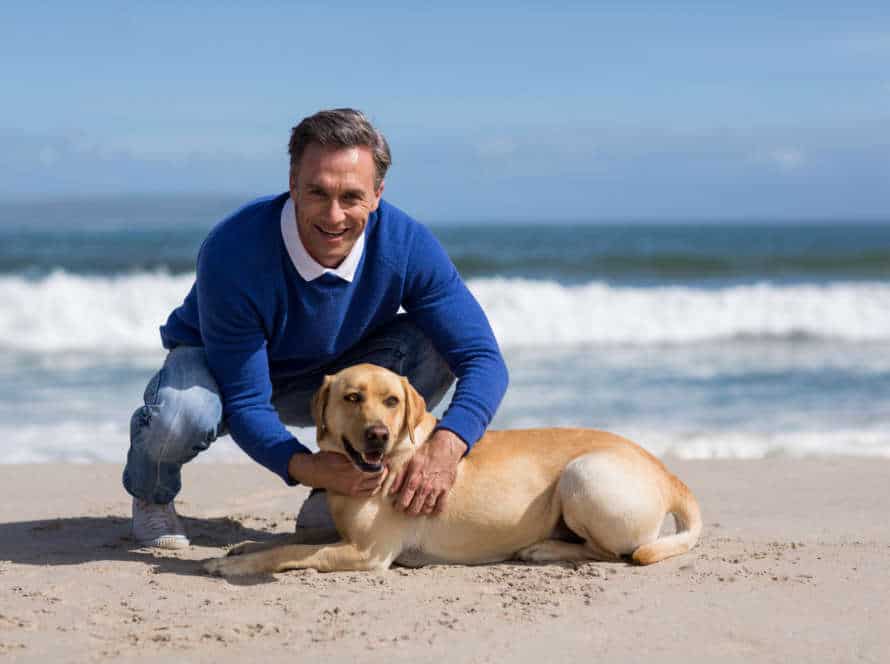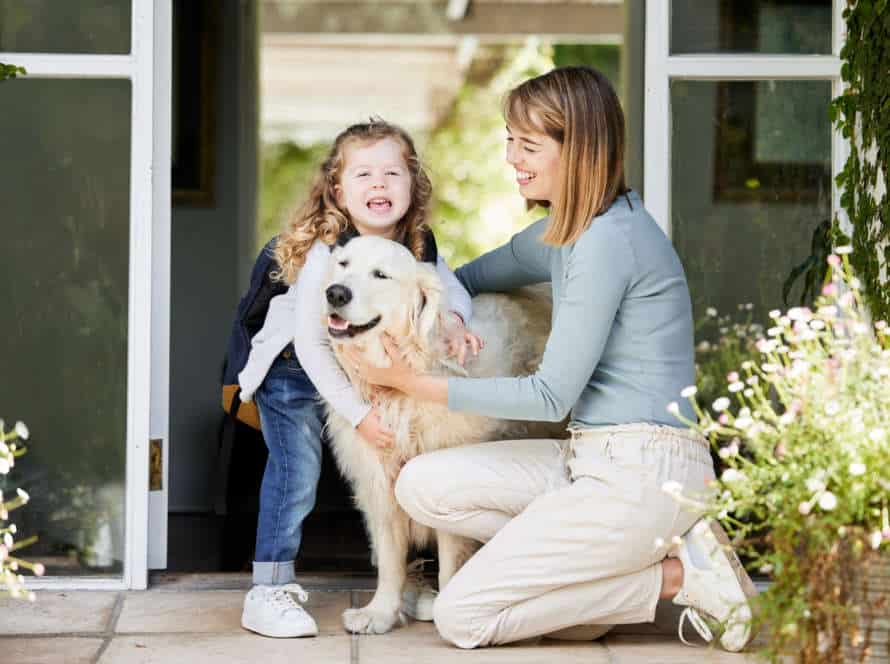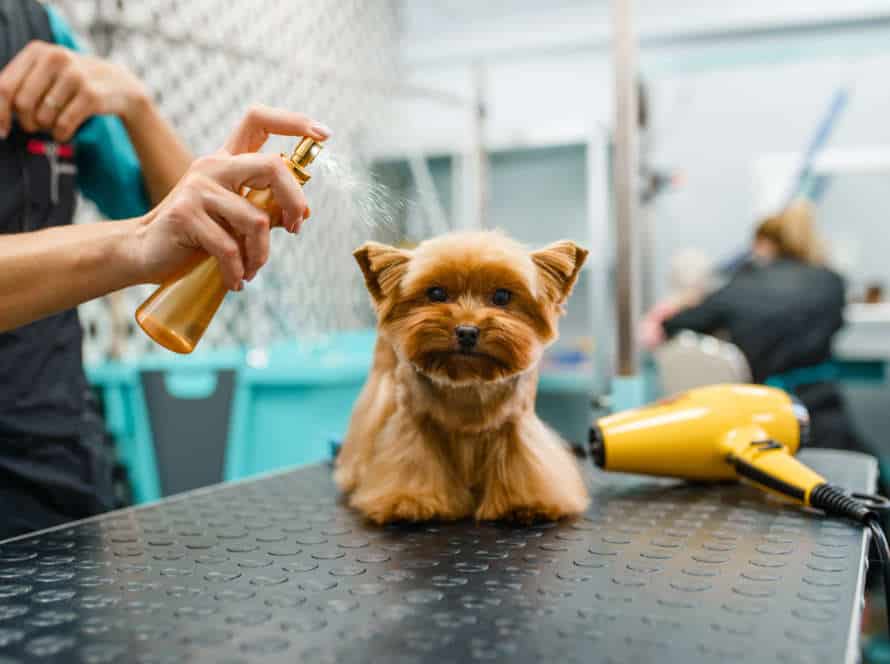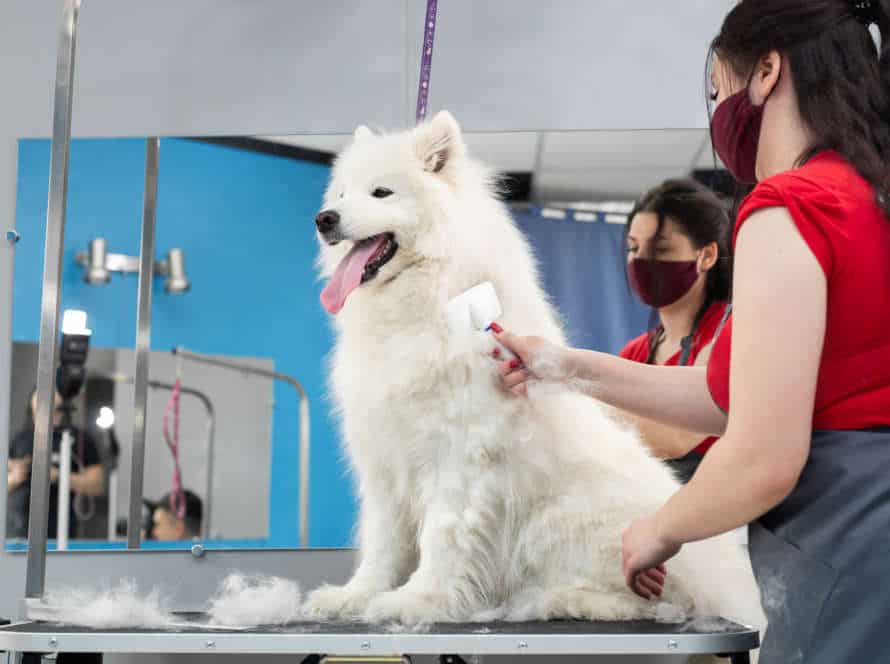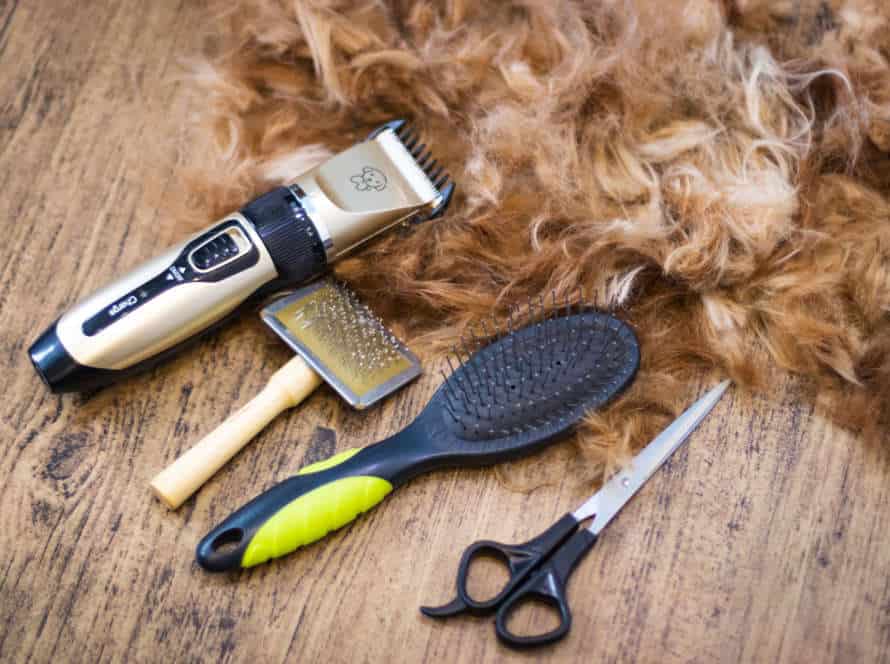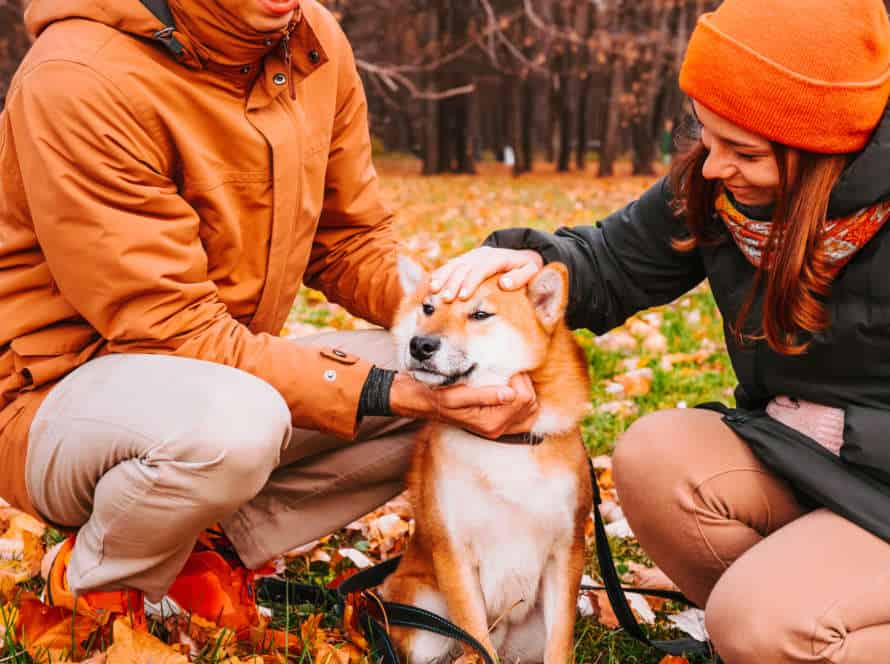Enhance Your Dog Training with These Positive Reinforcement Techniques
Positive reinforcement techniques are a great way to improve your pup’s training. Plus, you can create a safe and loving atmosphere to promote good behaviour. Here are some tips:
- Treats: Give a treat immediately after good behaviour. This helps your dog link the reward to the action, encouraging them to repeat it.
- Verbal Praise: Dogs love positive attention. So, use an excited voice and say things like “good boy/girl” to reinforce good deeds.
- Playtime: Use toys as rewards during playtime. This helps your dog learn, plus it’s fun!
- Consistency: Consistency is the key to success in dog training. Make sure to use positive reinforcement techniques regularly, especially at the start of training.
Pro tip: Every dog is different. So, be patient and try different methods to figure out what works best for your buddy.
Positive Reinforcement Basics
Positive reinforcement is a major part of teaching dogs. It means giving rewards when they do what you want. There are various types of rewards and techniques that work best with positive reinforcement. Let’s learn about the basics of positive reinforcement and how to use it in dog training.
Definition and Explanation of Positive Reinforcement
Positive reinforcement is a training technique that rewards good behavior in dogs. This increases the chance of that behavior happening again. Treats, praise and playtime can be used as rewards. So, when your pup behaves well, reward them! Doing this strengthens the bond between you and your pup. Plus, it’s a humane way to train.
Examples of Positive Reinforcement in Dog Training
Positive reinforcement is great for teaching your pup. Here are some examples of it in action:
- Treats – Giving your pooch a treat when they listen to a command or act well reinforces that behavior & encourages them to do it again.
- Verbal Praise – Praising them with “good boy/girl” or “well done” rewards them & makes them feel appreciated.
- Playtime & Toys – Playing with them or giving them a toy as a reward for good behaviour is a super motivator.
- Attention – Dogs love attention, and positive reinforcement can come in the form of giving it to them. For instance, a belly rub when they do a trick correctly.
Remember, it is important to use positive reinforcement consistently & immediately after desired behavior to reinforce it.
Benefits of Positive Reinforcement over Traditional Training Methods
Powerful training with positive reinforcement is much better than traditional methods. Reward good behaviour and you can teach your pup to do it again.
Benefits of positive reinforcement:
- Build trust and a strong relationship between you and your dog.
- Boosts your dog’s self-belief and reduces their anxiety.
- Stimulates your dog to learn and act alone.
- Long-lasting behavioural change.
- Improves your pup’s wellbeing and cheer.
Techniques for positive reinforcement include clicker training, shaping, and luring. Make sure to reward your pup immediately after they complete the wanted behaviour, using treats or rewards they find most motivating. With patience and consistency, you can use positive reinforcement to change your pup’s behaviour and strengthen your bond.
Positive Reinforcement Techniques
Positive Reinforcement Techniques can really help when you are teaching your pup. These approaches focus on rewarding good behaviour. This will then encourage more of the same in the future. With the right techniques, you can make your bond with your pet stronger. It also helps them learn more quickly and easily. Read on to find out more about these Positive Reinforcement Techniques and how they can improve your dog training.
Clicker Training
Clicker training is a positive reinforcement method that uses a clicker to mark desired behavior, then reward your dog. Here are some techniques you can use:
- Clicker training: Utilize a clicker to mark behaviors you want to encourage, and reward with a treat or praise.
- Treats: Give treats to your pup to make them repeat good behavior.
- Verbal cues: Utter clear, consistent verbal cues to communicate with your dog, and reinforce good behavior.
- Playtime: Incorporate play and toys into your training to make it enjoyable and help them learn faster.
- Training sessions: Keep your training sessions short and frequent. Focus on one command at a time, to avoid overwhelming your dog.
These positive reinforcement techniques can strengthen your dog’s training, and create a strong bond between you and your pet. Pro tip: Be consistent for the best results!”
Treat-Based Training
Treat-based training is a great way to train your pup! It rewards desired behavior with treats, verbal praise, and affection. Here are a few tips for success:
- Pick yummy treats that your pup loves.
- Give only a small piece when they do the right thing.
- Combine treat rewards with verbal praise & pets.
- Be consistent with the reward.
- Gradually decrease treats & increase verbal rewards.
Bonus: This method helps create a strong bond between you & your pup as you’re positively reinforcing their behavior!
Verbal and Physical Praise
Verbal & physical praise – two powerful reinforcements for your dog training.
Verbal: Use a high-pitched, excited voice. Say “good dog” or “well done” when your pup does what they should. Be consistent & timely with the praise to help your pup recognize the behavior with a reward.
Physical: Petting, hugging & treats when your dog behaves. This encourages desired behavior and builds a strong bond between you and your pup. Remember to use physical praise sparingly & appropriately – don’t overstimulate or overwhelm your pup.
Combine verbal & physical praise to create a positive atmosphere and reinforce good behaviors. This makes your furry friend a well-behaved, happy pet!
Play-Based Training
Play-based training is a great way to make your dog training more fun. With it, you can get better results. Here’re some ideas:
- Play tug of war! Teach your pup to “drop it” and reward with treats.
- Fetch and retrieve is a great way to train basic commands. Use toys to help and reward your pup when they do well.
- Hide and seek helps stimulate their scent and hunting instinct. Hide treats around the house and reward them when they find it.
Remember, play-based training should be enjoyable for your pup. Use positive reinforcement when they complete a task and they’ll be keen to learn more!
Common Dog Training Challenges and How to Address Them with Positive Reinforcement
Training a pup can be tough. But, with the right plans and positive encouragement tactics, you can make a well-mannered pet. Positive reinforcement encourages good doings by giving treats or rewards for good actions. It also teaches bad behavior by removing rewards when the behavior is not appropriate. In this article, we will look at common dog training problems and how to solve them with positive reinforcement.
Fear and Anxiety
Fear and anxiety are common in dog training. Positive reinforcement techniques can help address and overcome them. Here are tips to enhance your training:
- Reward good behavior with treats, praise and affection.
- Use a calm, reassuring tone.
- Be patient and consistent.
- Create a positive environment.
- Offer choices to increase confidence.
Positive reinforcement strengthens the bond between you and your dog. Pro tip: Seek professional help if fear and anxiety-related behaviors are present.
Aggression
Aggression can be a problem for dog owners when training their pup. It’s important to use positive reinforcement techniques to promote good behavior and make your pup feel secure. Here are some tips to help:
- Identify the source of aggression, be it fear, anxiety, or territorial behavior.
- Introduce your dog to new environments and social situations gradually. Reward good behavior with treats and praise.
- Train your dog to respond to commands like “sit,” “stay,” and “come” using positive reinforcement techniques like clicker training or treat rewards.
- Use calming techniques such as deep breathing or massage to relax your pup in tense moments.
- If aggression persists, get help from a certified dog behaviorist.
With patience, consistency, and positive reinforcement, your pup can learn to cope with different situations without aggression.
Separation Anxiety
Separation anxiety is a common problem for pet owners training their dogs. It occurs when pups feel stressed and anxious when their owners leave or are away from them. This can lead to bad behaviors like barking, whining, chewing, and going to the bathroom inside.
To help overcome separation anxiety with positive reinforcement techniques, try these steps:
- Put on shoes or grab keys as part of your leaving routine. Do this multiple times a day without leaving, so your pup knows it doesn’t mean you’re gone.
- Give your pet toys, games, or puzzles to keep them occupied while you’re away. This will help them see leaving as a positive thing, not a cause of stress.
- Introduce crate training or provide a safe space for your dog to feel secure.
- Reward calm behavior when you’re out, increasing the time in small increments.
Remember to be patient, consistent, and positive when training. This will create a strong bond and trust, leading to obedient and friendly behavior.
Biting and Chewing
Biting and chewing can be tough to train. Use positive reinforcement techniques to help! Here are some tips:
- Reward good behavior. Give treats, toys, or praise when your pup behaves.
- Provide chew toys. Make sure your dog has plenty of chew toys to keep them occupied.
- Redirect focus. If your dog starts biting something they shouldn’t, redirect them to an appropriate activity or toy.
- Be consistent. Everyone in the household should use the same training techniques.
These positive reinforcement tips will help you train your pup to stop biting and chewing, and encourage good behavior.
How to Introduce Positive Reinforcement Training to Your Dog
Positive reinforcement? Let’s reward good behaviors and ignore the bad ones. It’s very popular and works well. Dog owners and trainers use it a lot. This method not only reinforces good behavior, but also strengthens the bond between you and your pup.
Here’s how to introduce positive reinforcement training to your dog:
Setting up Training Sessions
Train your pup with positive reinforcement for the best results! Here’s what to do:
- Pick a calm, distraction-free spot for the training.
- Gather the items you’ll need, like treats, toys and a clicker (optional).
- Introduce the command or trick, like “sit” or “stay”.
- Reward your pet when they obey or perform the trick right.
- Do this several times, reducing the rewards as they get better.
- Be patient, consistent and positive. With time, your dog will learn new things and be a great companion.
Consistency and Persistence
Consistency and persistence are musts when educating your pup with positive reinforcement training. Stable and predictable settings are ideal for a pup’s growth and introducing new habits can be a tricky task. Here are some tips to enhance your pup’s training!
- Find what motivates your pup – rewards can range from food to toys to simple praises. Discover which works best for your pup.
- Pick a command – pick a word or phrase that your pup will associate with the desired activity.
- Keep training sessions brief – focus on quality and not quantity. Short sessions keep your pup’s attention.
- Be consistent with rewards – consistency is the key to reinforcing proper behaviour.
- Patience is a virtue – positive reinforcement takes time and patience. Don’t give up and stay persistent, you will see results eventually.
Pro tip: Positive reinforcement training builds an unbreakable bond between a pup and its owner.
Setting Achievable Goals
Setting goals is a must for positive reinforcement training with your pup. Make sure the aims are achievable and tailored to your dog’s ability and character.
For instance, identify behaviours you want to reinforce or reduce. Then, break down tougher tasks into more achievable steps.
Positive reinforcement techniques, such as treats, compliments and playtime, should be used for great behaviour.
Keep track of your progress and recalibrate goals if needed.
Pro Tip: Positively reinforce good behaviour, rather than punishing bad behaviour. This will make the training a happier experience for both you and your pet, with more success.
Tips and Tricks for Successful Positive Reinforcement Dog Training
Positive reinforcement is a great way to train your pup. Reward good behavior! This will help your dog to do those behaviors more often. Plus, it strengthens the bond between you and your furry friend. It also makes training an enjoyable experience.
Here are some tips for successful positive reinforcement dog training. Enjoy!
Avoiding Punishment
Positive reinforcement is a popular and successful way to teach dogs good behaviour, without punishing them. Here are some tips to get the most out of this method:
- Rewards: Give treats, toys or praise when they act well. This will make them feel good and show them the good behaviour they should repeat.
- Small steps: Start with basic commands and build up to more complex ones. This will help them gain confidence and not get overwhelmed.
- Timing: Reward them right away when they do what you want. This will help them link the reward to the action.
- Be consistent: Use the same commands and rewards each time. This will make it easier for them to understand what you want.
- Patience: Training takes time and needs patience. Celebrate every success, no matter how small, and don’t be angry.
Pro tip: Make training fun for both of you! If it’s fun, your dog will be more interested in learning.
Timing of Positive Reinforcement
Positive reinforcement is a great way to train your dog. Timing is essential to success! Prompt rewards let your pup know what behavior is wanted. Here are some tips for successful dog training using positive reinforcement:
- Be prompt – give rewards right away, so the pup knows what action you want.
- Have treats ready – have treats on hand so you can give them quickly when the desired behavior is seen.
- Vary rewards – to keep things interesting, use different treats.
- Be consistent – consistency is important to reinforce learning. If you sometimes reward a behavior and sometimes don’t, your pup may become confused or ignore your commands.
By following these positive reinforcement techniques, you can create a wonderful bond with your pup and effectively train them!
Motivating Your Dog
Motivating your pup is essential to successful positive reinforcement pup training. Here are some tips to help you improve your pup’s training with positive reinforcement techniques:
- Use super-tasty treats during training, like cooked chicken or cheese bits.
- Use a cheerful voice to motivate your pup during training.
- Find out your pup’s favorite toys and use them as rewards.
- Incorporate playtime to keep your pup interested and motivated.
- Give your pup breaks to avoid burnout and keep them refreshed.
Remember, positive reinforcement training is all about creating a rewarding experience for your pup! Pro tip – Always end the session on a positive note with a successful command plus praise and a treat.
Conclusion and Final Thoughts.
To wrap it up, positive reinforcement is the #1 way to make training your pup a success. This means rewarding your pooch for good behavior, and turning a blind eye or redirecting negative behavior. Not only does this help form good habits in your pup, but it also strengthens your bond!
Some popular positive reinforcement techniques are clicker training, treats, and verbal praise. Keep in mind that every dog is unique and may respond differently to various methods.
Patience, consistency and a positive attitude are key when it comes to dog training. Incorporate these positive reinforcement strategies into your routine and you will notice improvements in your dog’s behavior and a healthier, happier pup.
Frequently Asked Questions
1. What is positive reinforcement training for dogs?
Positive reinforcement training involves rewarding desired behavior in dogs with treats, praise, or other types of positive reinforcement. This is done to encourage good behavior and discourage unwanted behavior.
2. Why is positive reinforcement training effective?
Positive reinforcement training is effective because it teaches your dog that good behavior equals reward. Dogs are more likely to repeat behaviors that are rewarded, so positive reinforcement encourages good behavior and gets results.
3. How do I start positive reinforcement training?
To start positive reinforcement training, choose a behavior you want to reinforce (such as “sit” or “stay”) and gather treats or other rewards. When your dog performs the desired behavior, immediately reward with a treat or praise. Repeat consistently until your dog learns the desired behavior.
4. Can positive reinforcement training be used for all types of dogs?
Yes, positive reinforcement training can be used for all types of dogs regardless of breed, age or temperament. It is a safe and humane training method that encourages good behavior in all dogs.
5. What are the benefits of positive reinforcement training?
The benefits of positive reinforcement training include: creating a strong bond with your dog, building trust and mutual respect, improving communication, increasing your dog’s confidence, and helping them become more well-behaved and obedient.
6. How long does it take to see results with positive reinforcement training?
The amount of time it takes to see results with positive reinforcement training depends on the dog and the behavior being trained. Generally, you can see some improvement within a few sessions, but it may take several weeks or months to fully train a behavior.


